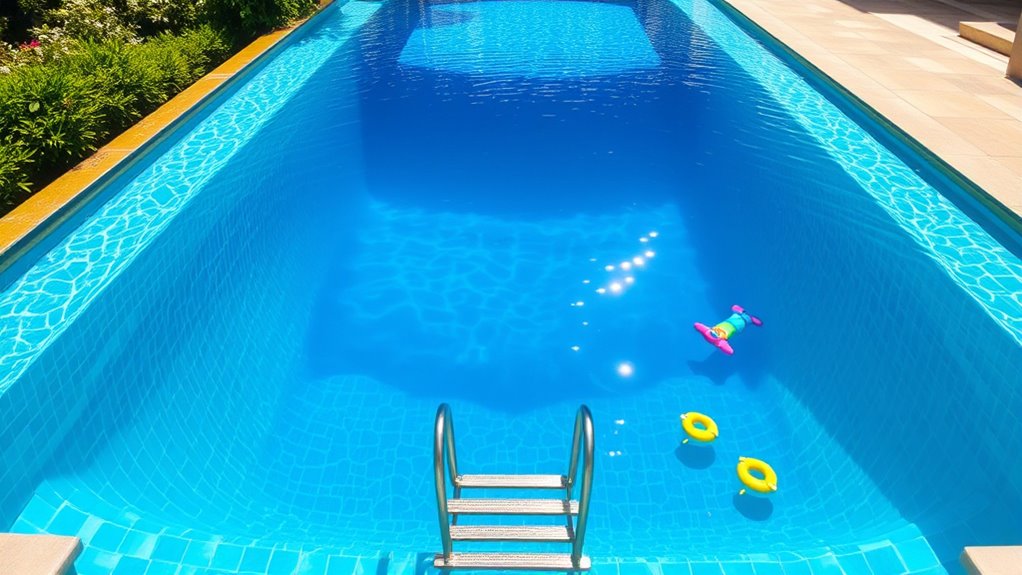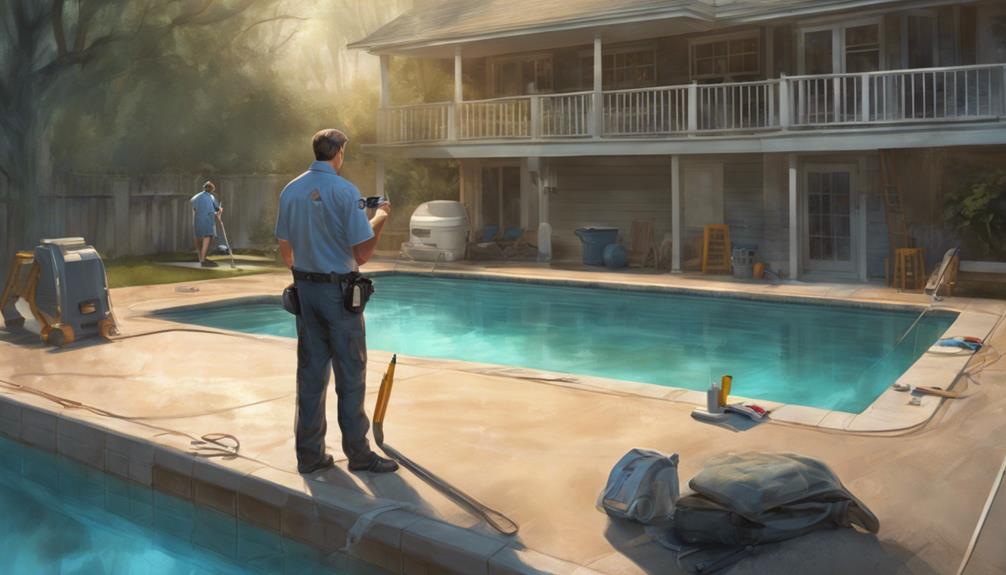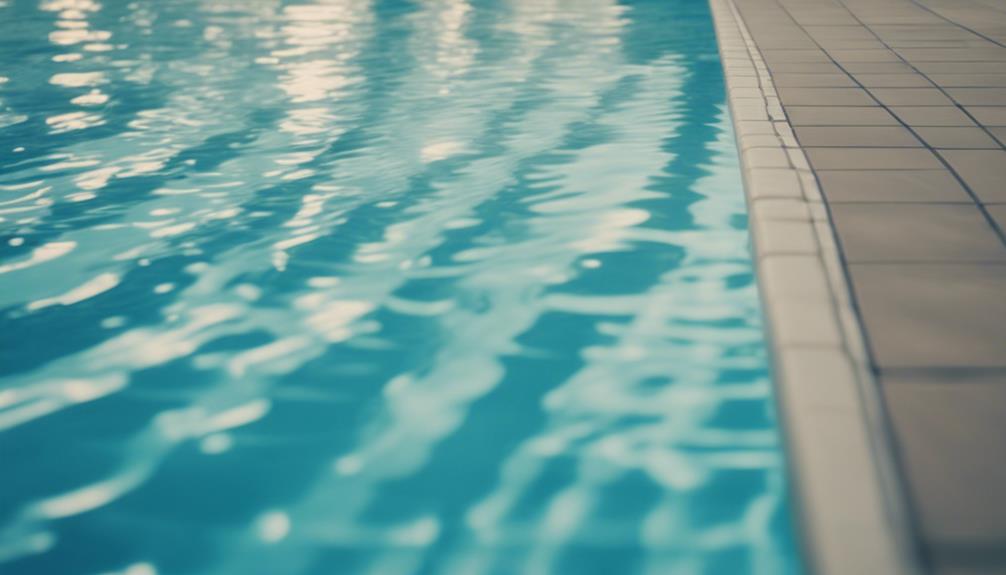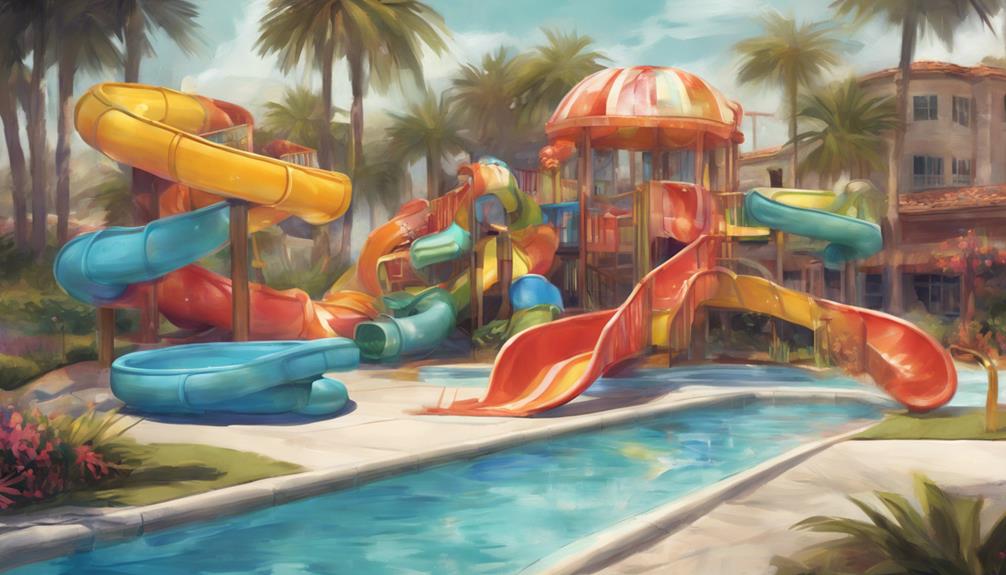For a safe and versatile home pool, aim for a depth of at least 3 to 4 feet for casual swimming and family fun, with a deeper area of around 6 to 9 feet if you enjoy water sports or diving. Shallow zones are safer for children and beginners, while deeper sections suit more experienced swimmers. Factors like your climate and heating options also influence the ideal depth. Stay with us to discover how to choose the perfect depth for your needs.
Key Takeaways
- For safety and general use, a depth of 3 to 5 feet is recommended for most residential pools.
- Deeper sections (around 6 to 9 feet) are suitable for diving, water sports, or laps.
- Shallow areas are ideal for children, beginners, and relaxation, enhancing safety and comfort.
- Consider local climate and heating options; shallower pools warm faster and are easier to maintain.
- Match pool depth to intended activities and safety priorities to ensure optimal enjoyment and security.
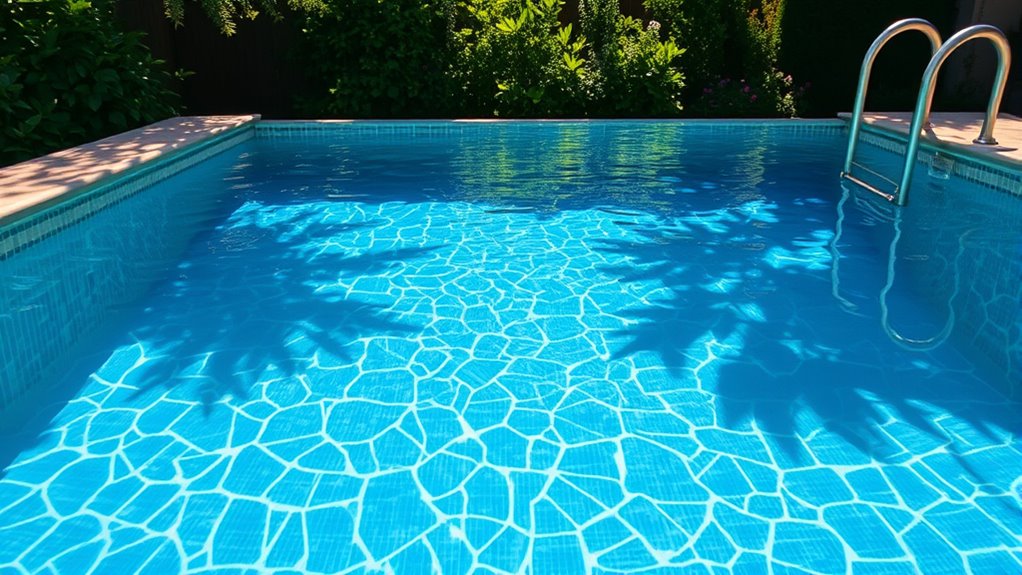
When planning a home swimming pool, one of the most important decisions is how deep it should be. The depth impacts not just the pool’s appearance and functionality, but also your safety and comfort. A deeper pool might seem appealing for diving or laps, but it also brings increased risks and considerations. You need to think about pool safety first, ensuring that everyone who uses the pool can enjoy it without danger. Shallow areas help beginners, children, and those who prefer relaxing in waist-deep water, while deeper sections are better suited for experienced swimmers or water sports. Deciding on the right depth means balancing safety with your desired usage.
Choosing the right pool depth balances safety, activity needs, and comfort for enjoyable swimming experiences.
A key factor to keep in mind is water temperature. Deeper pools tend to have more stable temperatures because they’re less affected by surface weather changes. However, they also can be harder to warm up, especially if you don’t have a heating system. Shallow pools heat up faster and are easier to maintain at a comfortable temperature, making them ideal for casual lounging and family fun. If you plan to use your pool year-round, or in cooler climates, considering depth in relation to how you’ll heat the water is essential. A shallower design can help you keep the water warm more efficiently, while a deeper pool might require more energy to heat.
Your choice of depth also influences water circulation and filtration. Shallow pools tend to have better circulation, reducing stagnant areas where bacteria or algae might grow. This supports overall pool safety by minimizing health risks. Conversely, deeper pools can create dead zones where water doesn’t circulate as well, requiring more diligent maintenance. If you’re concerned about water safety, especially with children or inexperienced swimmers, opting for a shallower section at least 3 to 4 feet deep allows everyone to enjoy the pool comfortably and securely. Additionally, the cybersecurity vulnerabilities associated with smart pool systems highlight the importance of secure controls and data protection to prevent unauthorized access or tampering.
Additionally, think about your long-term plans and how the pool will be used. If you’re into water sports or diving, the minimum depth should be at least nine feet to prevent accidents. For casual swimming and family time, a depth of 3 to 5 feet is usually sufficient and safer. Remember, the right depth should align with your safety priorities, activity preferences, and climate considerations. When you carefully weigh these factors, you’ll end up with a pool that’s both safe and enjoyable for everyone.
Frequently Asked Questions
What Is the Typical Cost Difference Between Shallow and Deep Pools?
You’ll notice a significant cost comparison between shallow and deep pools, with deep pools generally costing more. Installation expenses increase with depth due to additional materials, stronger structural supports, and more complex excavation. Expect to spend several thousand dollars extra for a deep pool, especially if it’s designed for diving or advanced features. Budget accordingly, as the increased depth impacts both initial costs and long-term maintenance.
How Does Pool Depth Affect Maintenance Requirements?
You’ll find that a deeper pool demands more maintenance, making algae control and water circulation trickier. Think of it as battling a persistent villain—you need stronger skimmers and better filters to keep the water crystal clear. Shallow pools are the lazy, overfed pets of the backyard world, needing less attention, while deep pools are the high-maintenance divas, constantly demanding your time to prevent algae from throwing a party.
Are There Safety Concerns Specific to Very Deep Pools?
Yes, very deep pools pose safety concerns. Depth hazards increase the risk of injury if someone dives in unprepared, and rescue challenges become more difficult if an emergency occurs. You should guarantee proper signage and safety features, like ladders and depth markers, to mitigate these risks. Always supervise swimmers closely, especially in deeper areas, and consider installing safety equipment to make rescues easier if needed.
Can Depth Influence the Pool’s Energy Efficiency?
Yes, the depth can influence your pool’s energy efficiency. Deeper pools tend to have more water volume, which can increase heating costs since more water needs heating, reducing energy savings. Additionally, deeper pools might lose heat faster due to increased surface area and water movement. To optimize energy efficiency, consider a depth that balances your recreational needs with manageable heating costs, ensuring you save on energy without sacrificing comfort.
What Local Regulations or Permits Are Needed for Deep Pools?
Like charting a maze, securing local permits and safety regulations is essential before building your deep pool. You need to check with your local authorities to obtain permits, which often involve safety inspections and adherence to zoning laws. Regulations may specify pool depth, fencing, and safety covers. Failing to follow these rules can lead to fines or needing to make costly adjustments, so always verify requirements before starting construction.
Conclusion
Ultimately, the depth you choose should suit your swimming style and space. Remember, safety and satisfaction should be your top priorities. So, whether you prefer a shallow splash zone or a profound plunge destination, decide wisely and design deliberately. Embark on decisions with determination, and don’t forget—depth demands diligence. By balancing beauty and boundary, you’ll build a backyard that’s both breathtaking and safe, turning your pool into a perfect personal paradise.

